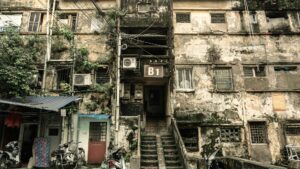Regional Project On Pro Poor Housing Finance In Asia- Pacific
Introduction
The Regional Project on Pro-Poor Housing Finance in Asia-Pacific was initiated to address these challenges by promoting inclusive housing finance mechanisms tailored to the needs of the poor. The Asia-Pacific region faces a significant housing challenge, with millions lacking access to affordable, adequate, and secure housing. Rapid urbanization, population growth, and economic disparities have exacerbated this issue, particularly among low-income and marginalized communities.
Objectives of the Regional Project On Pro Poor Housing Finance:
The primary goals of the project include:
-
Enhancing Access to Pro Poor Housing Finance: Developing financial products and services that cater to the unique needs of low-income households.
-
Strengthening Institutional Frameworks: Building the capacity of financial institutions, NGOs, and community-based organizations (CBOs) to deliver pro-poor housing finance.
-
Promoting Policy Reforms: Advocating for regulatory changes that facilitate inclusive housing finance and protect the rights of low-income borrowers.
-
Facilitating Knowledge Sharing: Establishing platforms for stakeholders to exchange best practices, innovations, and lessons learned.
Key Components and Strategies On Pro Poor Housing Finance:
1. Innovative Pro Poor Housing Finance Models
The project emphasizes the development of pro poor housing finance models that are accessible to the poor. For instance, in Mongolia, the Japan Fund for Poverty Reduction (JFPR) implemented a program that required beneficiaries to save for six months before receiving housing loans, ensuring commitment and financial discipline. Loan sizes, repayment periods, and interest rates were tailored based on income levels to enhance affordability.
2. Community-Based Approaches
Recognizing the importance of community involvement, the project supports models where communities play a central role in housing development. The Community Mortgage Program (CMP) in the Philippines enables organized communities to purchase land and construct housing collectively, fostering a sense of ownership and mutual support.
3. Risk Mitigation Mechanisms
To encourage financial institutions to lend to low-income households, the project advocates for the establishment of credit guarantee funds and risk mitigation tools. These mechanisms reduce the perceived risks associated with lending to the poor, thereby increasing their access to housing finance.
4. Capacity Building and Technical Assistance
The project provides training and technical assistance to stakeholders, including financial institutions, NGOs, and government agencies. This capacity-building ensures that these entities can effectively design and implement pro-poor housing finance programs.
Country-Specific Initiatives on Pro-Poor Housing Finance:
Mongolia
The Housing Finance Sector Program (HFSP) aimed to establish a sustainable, market-based housing finance system for low- and middle-income households. Despite these efforts, challenges such as high-interest rates and complex land titling processes limited the program’s reach among the poorest segments.
Thailand
Programs like Baan Eua-Arthorn (BEA) and Baan Mankong (BMK) focused on providing affordable housing to low-income communities. While these initiatives made significant strides, issues like a lack of credit histories among applicants and the reluctance of banks to participate due to perceived risks hindered their full potential. slideum.com
Philippines
The CMP has been instrumental in enabling low-income families to secure land and housing through collective action. By 2001, over 106,000 families had benefited from the program, highlighting its effectiveness in addressing housing needs among the poor.
Pakistan
The World Bank’s Pakistan Housing Finance Project (PHFP) aims to expand homeownership through affordable housing finance, particularly targeting women and low-income groups. The project supports institutions like the Pakistan Mortgage Refinance Company (PMRC) to increase the availability of mortgage financing. World Bank
Challenges and Barriers of the Regional Project On Pro-Poor Housing Finance:
Despite the progress made, several challenges persist:
-
Land Titling and Registration: In countries like India, Pakistan, and Mongolia, unclear land titles and cumbersome registration processes impede access to housing finance for the poor.
-
Lack of Long-Term Funding: Financial institutions often rely on short-term funds, creating mismatches when offering long-term housing loans, thereby limiting their ability to serve low-income borrowers.
-
Credit Histories and Underwriting Standards: Many low-income individuals lack formal credit histories, making it challenging for them to qualify for traditional housing loans.
-
Absence of Secondary Mortgage Markets: The lack of developed secondary mortgage markets in several countries restricts the flow of capital into housing finance, limiting the scalability of pro-poor housing programs.
Regional Support Mechanisms On Pro Poor Housing Finance:
The project underscores the importance of regional collaboration to address pro-poor housing finance challenges. Key recommendations include:
-
Establishing a Regional Network: Creating a platform to link institutions across the housing finance spectrum, facilitating research, capacity building, and advocacy.
-
Standard Setting and Norms: Developing common standards and best practices to guide pro-poor housing finance initiatives across the region.
-
Creating Regional Funds: Mobilizing resources to support innovative housing finance projects and provide technical assistance to countries in need.
Conclusion
The Regional Project on Pro-Poor Housing Finance in Asia-Pacific represents a significant step toward addressing the housing needs of the region’s most vulnerable populations. By promoting inclusive financial mechanisms, fostering community participation, and encouraging regional collaboration, the project lays the groundwork for sustainable and equitable housing solutions. Continued commitment from governments, financial institutions, and communities is essential to build on these achievements and ensure that every individual has access to safe and affordable housing.

